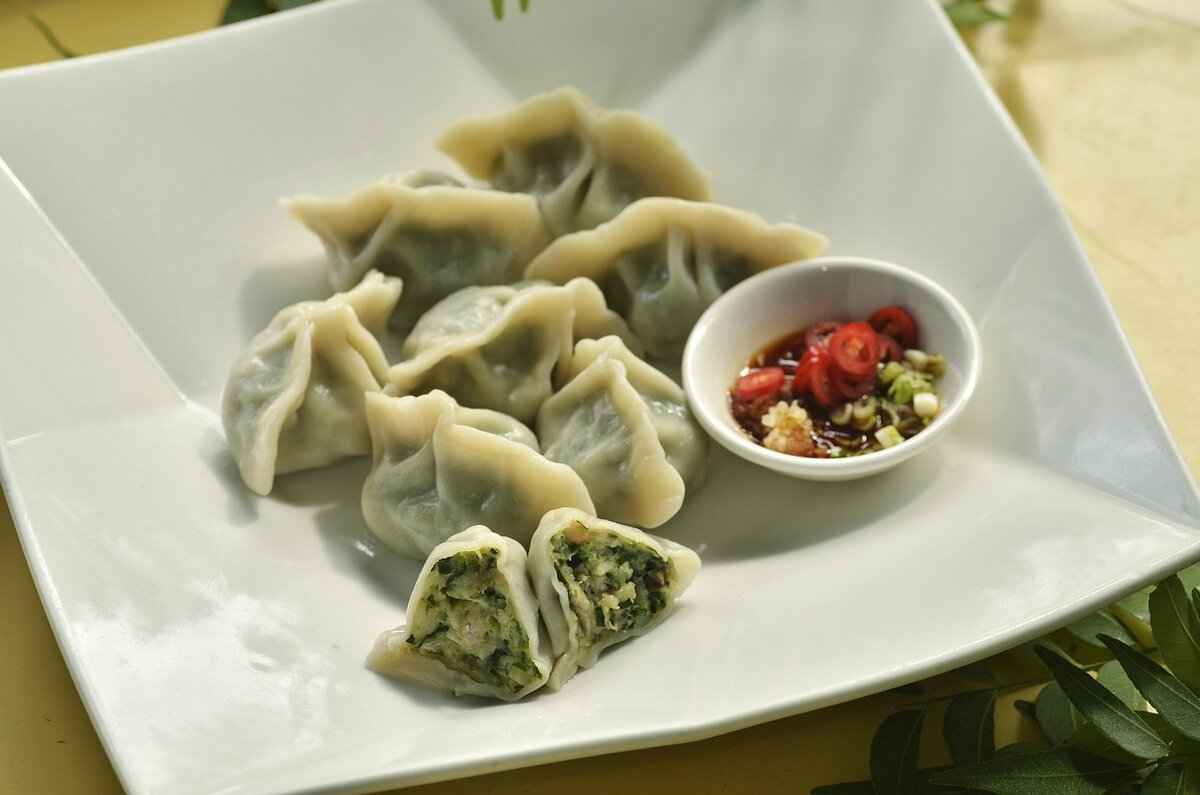Dairy and its alternatives play a significant role in Asian cuisine, influencing flavors, textures, and nutritional profiles across various dishes. This article delves into the traditional uses of dairy, the rise of dairy substitutes, and their nutritional benefits, catering to the diverse dietary preferences found within the region.
Asian cuisine showcases a rich variety of traditional dairy products. For example, yogurt is commonly used in South Asian dishes, providing a tangy flavor that enhances curries and marinades. In Mongolia, fermented mare’s milk, known as airag, is a staple drink, while cheese varieties like paneer are essential in Indian cooking, offering a source of protein and texture in vegetarian dishes. These products not only add depth to the cuisine but also reflect the cultural significance of dairy in different regions.
In recent years, there has been a noticeable shift towards dairy alternatives in Asia, driven by health-conscious consumers and increasing awareness of lactose intolerance. Plant-based options such as soy milk, almond milk, and oat milk are becoming widely accepted, providing a variety of flavors and health benefits. This trend is particularly evident in urban areas where consumers are seeking healthier, sustainable options that align with their dietary needs.
- Soy Milk: A versatile option rich in protein, often used in beverages and cooking.
- Coconut Milk: A creamy alternative that adds richness to curries and desserts.
- Almond Milk: A low-calorie option with a sweet, nutty flavor, perfect for smoothies and baking.
- Rice Milk: A hypoallergenic choice that is light and slightly sweet, ideal for those with allergies.
Soy milk is a staple in many Asian cuisines, particularly in East Asia. It is often found in dishes like tofu pudding and various desserts, where its creamy texture complements sweet flavors. Additionally, soy milk is a popular base for beverages such as bubble tea, showcasing its versatility across both sweet and savory applications.
Coconut milk is an essential ingredient in Southeast Asian cuisine, known for its ability to add a rich, creamy texture and unique flavor to dishes. It is commonly used in curries, soups, and desses, enhancing the overall taste profile. Its natural sweetness balances spicy flavors, making it a beloved component in many traditional recipes.
Dairy alternatives often provide several health benefits compared to traditional dairy. Many options are lower in calories and fat, making them suitable for those looking to manage their weight. Additionally, they can be fortified with essential vitamins and minerals, such as calcium and vitamin D, ensuring that consumers still receive important nutrients. Furthermore, these alternatives are generally easier to digest for those with lactose intolerance, allowing a broader audience to enjoy them.
Cultural factors significantly impact dairy consumption across Asia. In some regions, dairy is embraced and incorporated into daily diets, while in others, plant-based alternatives are preferred due to health concerns or dietary restrictions. For example, lactose intolerance is prevalent in many Asian populations, leading to a preference for dairy alternatives that cater to these health considerations.
Lactose intolerance affects a substantial portion of the Asian population, influencing dietary choices and driving the demand for dairy alternatives. As awareness of lactose intolerance increases, many consumers are opting for plant-based options that provide similar culinary benefits without the discomfort associated with traditional dairy products.
Innovations in food technology are enhancing the quality and variety of dairy alternatives, making them more appealing and accessible. Advances in processing techniques are improving the taste and texture of plant-based products, allowing them to better replicate the sensory experience of traditional dairy. As a result, these innovations are attracting a wider audience, including those who may not have previously considered dairy alternatives.
Looking ahead, the integration of dairy and dairy alternatives in Asian cuisine is expected to continue growing. Factors such as health consciousness, sustainability, and culinary creativity will drive this trend. As consumers become more adventurous and open to exploring new flavors, the culinary landscape will evolve, offering exciting opportunities for both traditional and plant-based ingredients.

What Are the Traditional Dairy Products in Asian Cuisine?
Asian cuisine is renowned for its rich diversity and intricate flavors, and one of the key components that enhance these culinary experiences is dairy. Traditional dairy products in Asian cuisine are not only integral to the dishes themselves but also reflect the cultural significance and historical practices of various regions. This article delves into the traditional dairy products that are prevalent in Asian kitchens and their unique roles in enhancing flavors across different cultures.
Asian cuisine features a variety of traditional dairy products, each with unique flavors and uses that enhance dishes across different cultures. Some of the most notable dairy products include:
- Yogurt: Widely used in Indian cuisine, yogurt serves as a cooling agent in spicy dishes and is also a base for drinks like lassi. It is valued for its probiotic benefits and creamy texture.
- Paneer: A type of fresh cheese, paneer is a staple in Indian cooking. It is often used in vegetarian dishes, providing a rich source of protein and a satisfying texture.
- Milk: In many Asian cultures, milk is consumed fresh or used in cooking. It is a key ingredient in desserts like kheer (rice pudding) and various sweetmeats.
- Condensed Milk: Popular in Southeast Asian desserts, condensed milk adds sweetness and creaminess to dishes such as Thai iced tea and various pastries.
- Cheese Varieties: Different regions have their own types of cheese, such as Queso Blanco in the Philippines and tofu cheese in Japan, each adding unique flavors to local dishes.
The use of these dairy products not only enhances the taste of dishes but also contributes to their nutritional profile. For instance, yogurt and paneer provide essential proteins and calcium, making them vital components of a balanced diet.
In recent years, there has been a significant shift towards dairy alternatives in Asia, driven by rising health consciousness and dietary restrictions. Many consumers are seeking plant-based options due to lactose intolerance or vegan lifestyles. This trend has led to the emergence of various innovative substitutes that cater to diverse dietary preferences.
Common plant-based dairy alternatives include:
- Soy Milk: A staple in many Asian diets, soy milk is made from whole soybeans and is often used in beverages and desserts.
- Coconut Milk: Extracted from the flesh of coconuts, this creamy alternative is widely used in curries and desserts, especially in Southeast Asian cuisines.
- Almond Milk: Gaining popularity for its light flavor, almond milk is often used in smoothies and as a base for various dishes.
These alternatives not only provide unique flavors but also offer nutritional benefits, such as lower calories and fat content, making them appealing to health-conscious consumers.
Cultural preferences significantly influence dairy consumption across Asia. In some regions, dairy is embraced and incorporated into daily diets, while in others, plant-based alternatives are favored due to lactose intolerance. This variance highlights the importance of understanding local dietary habits and preferences when discussing dairy in Asian cuisine.
Lactose intolerance is prevalent in many Asian populations, leading to a preference for dairy alternatives. This health consideration has prompted food manufacturers to innovate and create lactose-free products, ensuring that everyone can enjoy the flavors of traditional dishes without discomfort.
Recent innovations in food technology are enhancing the quality and variety of dairy alternatives. With improved taste and texture, these products are becoming more appealing to a broader audience. Additionally, advancements in packaging and distribution are making these alternatives more accessible in Asian markets.
Looking ahead, the integration of both traditional dairy and dairy alternatives in Asian cuisine is expected to grow. As health consciousness and sustainability continue to influence consumer choices, the culinary landscape will likely evolve, offering a rich tapestry of flavors and options for future generations.

How Are Dairy Alternatives Gaining Popularity in Asia?
The landscape of food consumption in Asia is undergoing a remarkable transformation, particularly in the realm of dairy and its alternatives. As more consumers become health-conscious and seek diverse dietary options, dairy alternatives are gaining significant traction across the continent. This shift is not merely a trend; it reflects a broader cultural and health-oriented movement that is reshaping traditional eating habits.
Several factors contribute to the rising popularity of dairy alternatives in Asia. Firstly, there is an increasing awareness of health benefits associated with plant-based diets. Many consumers are seeking to reduce their intake of saturated fats and cholesterol, which are often found in traditional dairy products. This has led to a surge in the demand for alternatives like soy milk, almond milk, and oat milk.
- Health Trends: The emphasis on health and wellness has prompted many individuals to explore plant-based options that are perceived as healthier.
- Lactose Intolerance: A significant portion of the Asian population is lactose intolerant, making dairy alternatives a practical choice for those who experience discomfort with traditional dairy.
- Sustainability: Environmental concerns are also influencing consumer choices, with many opting for plant-based products that have a lower carbon footprint.
As consumers explore dairy alternatives, several options have emerged as favorites:
| Plant-Based Alternative | Flavor Profile | Nutritional Benefits |
|---|---|---|
| Soy Milk | Nutty and creamy | High in protein, low in fat |
| Almond Milk | Light and slightly sweet | Low in calories, rich in vitamin E |
| Coconut Milk | Rich and tropical | Contains medium-chain triglycerides (MCTs) |
Asian cultures are embracing dairy alternatives in various culinary applications. For instance, soy milk is commonly used in traditional beverages such as soy milk tea and desserts like tofu pudding. Similarly, coconut milk is a staple in many Southeast Asian cuisines, enhancing the flavor of curries and desserts.
Moreover, innovation in food technology is enhancing the quality and variety of dairy alternatives. Companies are developing fortified versions of these products, enriching them with vitamins and minerals to meet the nutritional needs of consumers. This innovation is crucial in making dairy alternatives not only appealing but also nutritionally adequate.
Effective marketing strategies have played a significant role in promoting dairy alternatives. Brands are leveraging social media and influencer partnerships to reach health-conscious consumers. Campaigns that highlight the benefits of plant-based diets and showcase delicious recipes have gained traction, making these alternatives more accessible and desirable.
As consumers become more informed about their food choices, the demand for dairy alternatives is expected to grow. This trend signifies a shift towards more sustainable and health-oriented eating habits that reflect the evolving landscape of Asian cuisine.
What Are Common Plant-Based Dairy Alternatives?
In recent years, the demand for plant-based dairy alternatives has surged, reflecting a growing awareness of health, environmental, and ethical concerns. These alternatives not only cater to those with lactose intolerance but also appeal to a broader audience seeking healthier options. Among the most popular alternatives are soy milk, almond milk, and coconut milk. Each of these options brings unique flavors and nutritional benefits that can enhance various culinary creations.
Soy milk is derived from whole soybeans or soy protein isolate, making it a rich source of plant-based protein. It is particularly favored for its creamy texture and versatility. Soy milk can be used in a variety of dishes, from smoothies to soups, and serves as an excellent base for desserts. Nutritionally, it contains isoflavones, which are known for their antioxidant properties, and it is often fortified with vitamins such as B12 and D, making it a nutritious choice for those avoiding dairy.
Almond milk is made by blending almonds with water and then straining the mixture to create a smooth liquid. This alternative is naturally lower in calories than cow’s milk and is a good source of vitamin E, an important antioxidant that supports skin health. Almond milk has a slightly nutty flavor, making it a delightful addition to cereals, coffee, and baked goods. However, it is important to note that almond milk contains less protein compared to soy milk, so it may not be suitable for those looking to increase their protein intake.
Coconut milk is extracted from the meat of mature coconuts and is known for its rich, creamy texture and distinct flavor. It is a staple in many Southeast Asian dishes, such as curries and soups, where it adds depth and richness. Coconut milk is high in medium-chain triglycerides (MCTs), which are believed to provide quick energy and may support weight management. Additionally, it can be used in desserts, smoothies, and even coffee, imparting a tropical flair to various recipes.
Each of these plant-based dairy alternatives offers unique culinary applications:
- Soy Milk: Ideal for creamy sauces, soups, and baked goods.
- Almond Milk: Perfect for smoothies, cereals, and coffee beverages.
- Coconut Milk: Best used in curries, desserts, and tropical drinks.
With the rise of veganism and plant-based diets, these alternatives are becoming increasingly available in supermarkets and cafes, allowing consumers to experiment with different flavors and textures in their cooking.
When comparing these plant-based options, it is crucial to consider their nutritional profiles:
| Type | Calories (per cup) | Protein (g) | Fat (g) | Calcium (% DV) |
|---|---|---|---|---|
| Soy Milk | 100 | 7 | 4 | 30% |
| Almond Milk | 30 | 1 | 2.5 | 25% |
| Coconut Milk | 550 | 5 | 57 | 0% |
Overall, these alternatives not only provide diverse flavors and textures but also contribute to a balanced diet, especially for those seeking to reduce their dairy intake.
How Is Soy Milk Used in Asian Dishes?
Soy milk is an essential component in many Asian dishes, celebrated for its versatility and nutritional benefits. This plant-based alternative to dairy is made from whole soybeans or soy protein isolate, making it a rich source of protein, calcium, and various vitamins. Its creamy texture and mild flavor allow it to blend seamlessly into both sweet and savory recipes.
In Asian cuisines, soy milk is utilized in a myriad of ways:
- Beverages: Soy milk is often consumed as a refreshing drink, either hot or cold. Popular in many Asian countries, it is sometimes sweetened or flavored with ingredients like vanilla or chocolate.
- Desserts: From traditional tofu pudding to soy milk ice cream, this ingredient is a key player in many sweet treats. Its ability to create creamy textures makes it a favorite in desserts across the region.
- Savory Dishes: Soy milk is not limited to sweet applications; it is also used in savory dishes such as soups and sauces. For instance, it can be a base for stir-fried dishes or added to curries for a creamy consistency.
When compared to cow’s milk, soy milk offers several advantages, particularly for those with lactose intolerance. It is naturally lactose-free and contains comparable amounts of protein. Additionally, soy milk is often fortified with vitamins such as D and B12, making it a suitable alternative for those following a vegan or vegetarian diet.
The incorporation of soy milk into the diet provides numerous health benefits:
- Heart Health: Rich in omega-3 fatty acids, soy milk can contribute to cardiovascular health.
- Bone Strength: Fortified soy milk can be an excellent source of calcium and vitamin D, essential for maintaining strong bones.
- Weight Management: Lower in calories than whole milk, soy milk can be a beneficial addition for those looking to manage their weight.
In traditional Asian cooking, soy milk plays a vital role in various iconic dishes:
- Douhua (Tofu Pudding): A popular dessert in China, it is made from soft tofu and served with sweet soy milk, syrup, or toppings like red bean paste.
- Chao Noodles: In some regions, soy milk is used to create a creamy sauce for stir-fried noodles, enhancing the flavor and texture.
- Soups: In dishes such as soy milk soup, the milk is combined with various ingredients to create a hearty and nutritious meal.
As culinary trends evolve, soy milk is being creatively incorporated into new dishes. Chefs are experimenting with fermented soy milk, creating unique flavors and textures that can enhance both traditional and modern recipes. Furthermore, the rise of health-conscious eating has led to an increased demand for soy milk-based products, inspiring innovations in food technology.
Overall, soy milk’s adaptability and health benefits make it a staple ingredient in Asian cuisine, bridging the gap between traditional practices and modern dietary needs.
What Role Does Coconut Milk Play in Asian Cooking?
Coconut milk is a staple ingredient in many Asian cuisines, renowned for its ability to impart a creamy texture and a subtle sweetness to a variety of dishes. This versatile ingredient is derived from the flesh of mature coconuts and is a key component in both savory and sweet recipes across Southeast Asia.
In many Southeast Asian curries, coconut milk serves as a rich base that balances the heat from spices and enhances the overall flavor profile. The creamy consistency of coconut milk helps to create a luxurious mouthfeel, making dishes like Thai green curry and Malaysian rendang particularly satisfying. Moreover, the natural sweetness of coconut milk complements the complex spices used in these curries, providing a harmonious blend of flavors.
Coconut milk is also a beloved addition to various soups, such as Tom Kha Gai, a traditional Thai soup that features chicken, mushrooms, and aromatic herbs. The inclusion of coconut milk not only adds depth and richness but also contributes to a silky texture that elevates the dish. Additionally, its subtle sweetness balances the sour and spicy elements, creating a well-rounded and flavorful experience.
In the realm of desserts, coconut milk shines as a key ingredient in many traditional sweets. Dishes like Thai sticky rice with mango and Filipino leche flan showcase the delightful flavor of coconut milk. Its creamy texture and natural sweetness make it an ideal choice for creating indulgent desserts that are both satisfying and comforting. Furthermore, coconut milk is often used in vegan and dairy-free desserts, catering to a wider audience.
Coconut milk is not only delicious but also offers several nutritional benefits. It is a source of healthy fats, particularly medium-chain triglycerides (MCTs), which are known for their potential health benefits, including improved metabolism and energy levels. Additionally, coconut milk contains essential vitamins and minerals, such as vitamin C, vitamin E, and iron, making it a nutritious addition to various dishes.
Different regions in Asia have their unique ways of incorporating coconut milk into their culinary traditions. For example, in Indonesia, coconut milk is often used in rendang, a slow-cooked beef dish rich in spices. Meanwhile, in Vietnam, it may be found in che, a sweet dessert soup that combines various ingredients like beans and fruits. These regional variations highlight the versatility of coconut milk and its ability to adapt to local flavors and cooking styles.
While coconut milk is an essential ingredient in many dishes, it does come with some challenges. For instance, its high-fat content can be a concern for those monitoring their fat intake. Additionally, the quality of coconut milk can vary significantly between brands, with some containing additives or preservatives. It is essential for consumers to choose high-quality, organic coconut milk to maximize both flavor and health benefits.
In summary, coconut milk is a beloved ingredient in Asian cooking, offering a unique flavor and richness that enhances curries, soups, and desserts. Its versatility, nutritional benefits, and ability to cater to various dietary preferences make it a staple in many kitchens across the region.
What Nutritional Benefits Do Dairy Alternatives Offer?
In recent years, the popularity of dairy alternatives has surged, particularly among health-conscious consumers. These alternatives not only cater to dietary restrictions but also offer a range of nutritional benefits that make them appealing substitutes for traditional dairy products.
Dairy alternatives, such as soy milk, almond milk, and oat milk, are increasingly recognized for their lower calorie and fat content compared to conventional dairy products. This makes them an attractive option for those looking to manage their weight or reduce their overall fat intake.
- Lower Caloric Intake: Many plant-based milks contain fewer calories than whole milk, making them suitable for calorie-conscious individuals.
- Reduced Fat Content: Dairy alternatives often have less saturated fat, which is beneficial for heart health.
- Fortified Nutrients: Many brands fortify their products with essential vitamins and minerals, such as calcium and vitamin D, to mimic the nutritional profile of traditional dairy.
In addition to these benefits, dairy alternatives are often enriched with a variety of nutrients that can enhance overall health. For instance, many almond and soy milks are fortified with vitamin E and omega-3 fatty acids, which are known for their antioxidant properties and heart health benefits.
For individuals with lactose intolerance, the consumption of traditional dairy can lead to uncomfortable digestive issues. Dairy alternatives provide a lactose-free option that allows those affected to enjoy similar flavors and textures without the adverse effects. Additionally, many plant-based milks are rich in dietary fiber, which is essential for maintaining a healthy digestive system.
- Promotes Healthy Digestion: Fiber-rich alternatives can aid in digestion and help prevent constipation.
- Supports Gut Health: Some dairy alternatives contain probiotics, which can enhance gut flora and improve overall digestive health.
While traditional dairy is well-known for its protein content, many consumers wonder if dairy alternatives can provide similar benefits. Soy milk, in particular, stands out as a high-protein alternative, often containing as much protein as cow’s milk. Other alternatives, like pea protein milk, are also emerging as excellent sources of plant-based protein.
However, it’s important to note that not all dairy alternatives are created equal. Some, like almond and coconut milk, may contain significantly less protein. Therefore, consumers should carefully read labels and choose options that align with their nutritional needs.
Beyond their nutritional benefits, dairy alternatives are often considered more sustainable than traditional dairy. The production of plant-based milks typically requires fewer natural resources, such as water and land, and results in lower greenhouse gas emissions. This makes them an appealing choice for environmentally conscious consumers who are looking to reduce their carbon footprint.
In conclusion, dairy alternatives not only offer a variety of nutritional benefits, including lower calories, reduced fat, and added vitamins, but they also provide solutions for those with lactose intolerance and contribute to sustainable eating practices. As the market for these products continues to grow, consumers are presented with more choices than ever before, allowing them to make informed decisions that align with their health goals and dietary preferences.

How Do Cultural Preferences Influence Dairy Consumption?
Cultural preferences significantly shape dietary habits across the globe, particularly in the context of dairy consumption in Asia. The diverse culinary landscape of the region reflects a complex interplay of tradition, health considerations, and individual tastes. This article delves into how these cultural factors influence the consumption of dairy and its alternatives, offering insights into the dietary choices prevalent in various Asian communities.
In Asia, the acceptance of dairy products varies widely from one region to another. For instance, in countries like India and Mongolia, dairy is deeply embedded in the culture, with products such as yogurt and cheese being staples in daily diets. Conversely, in many East Asian countries, including China and Japan, a significant portion of the population exhibits lactose intolerance, leading to a preference for plant-based alternatives.
Lactose intolerance is a common condition affecting a large number of people in Asia. This physiological response to dairy products results in digestive discomfort, prompting many to seek non-dairy alternatives. As a result, plant-based milks such as soy, almond, and coconut have gained immense popularity, providing viable options for those who cannot consume traditional dairy.
- Soy Milk: Widely consumed in various forms, soy milk is often used in beverages and desserts.
- Coconut Milk: A key ingredient in many Southeast Asian dishes, coconut milk adds a creamy texture and rich flavor.
- Almond Milk: Gaining traction among health-conscious consumers, almond milk is appreciated for its low-calorie content.
Traditional practices and beliefs play a pivotal role in shaping dairy consumption. In India, for example, dairy is considered a symbol of purity and is often used in religious rituals. In contrast, in countries with high lactose intolerance rates, the cultural narrative surrounding dairy is less favorable, leading to a significant shift towards plant-based diets.
While traditional dairy products are rich in calcium and protein, many dairy alternatives also offer substantial nutritional benefits. For instance, fortified plant milks often include added vitamins and minerals, making them a healthy choice for those avoiding dairy. This trend is particularly appealing to younger generations who prioritize health and wellness.
The rise of innovative food technology has opened new avenues for dairy alternatives. Companies are developing products that mimic the taste and texture of dairy, making them more appealing to a broader audience. This innovation not only caters to those with lactose intolerance but also attracts consumers interested in sustainable and ethical food choices.
As awareness of health and environmental issues grows, the integration of dairy and dairy alternatives in Asian cuisine is evolving. Many chefs are experimenting with both traditional and plant-based ingredients, leading to a fusion of flavors that cater to diverse palates. This trend reflects a broader shift towards inclusivity in dietary practices, allowing individuals to choose foods that align with their health needs and cultural preferences.
In conclusion, cultural preferences play a crucial role in determining dairy consumption patterns across Asia. The interplay of lactose intolerance, traditional practices, and innovative alternatives creates a dynamic landscape where both dairy and plant-based options coexist, catering to the diverse needs of the population.
What Are the Impacts of Lactose Intolerance in Asia?
Lactose intolerance is a significant health concern affecting a large segment of the Asian population. This condition occurs when the body lacks the enzyme lactase, which is essential for digesting lactose, the sugar found in milk and dairy products. As a result, many individuals experience discomfort after consuming dairy, leading to various digestive issues. The prevalence of lactose intolerance varies widely across different Asian countries, with estimates suggesting that up to 90% of certain populations may be affected.
The impact of lactose intolerance on dietary habits is profound. Many people in Asia have adapted their diets to avoid traditional dairy products, opting instead for plant-based alternatives. This shift not only alleviates discomfort but also encourages the exploration of diverse culinary options. For instance, many individuals turn to soy milk, almond milk, and coconut milk as substitutes, which are widely available in markets and grocery stores.
Culturally, the preference for dairy alternatives has led to a rich tapestry of new recipes and food products that cater to lactose-intolerant individuals. In many Asian cultures, traditional dishes are being reimagined to incorporate these alternatives. For example, soy milk is often used in desserts like tofu pudding or as a base for beverages like soy milk tea. Similarly, coconut milk is a staple in Southeast Asian curries and desserts, providing a creamy texture without the lactose.
Beyond catering to lactose intolerance, many dairy alternatives offer nutritional benefits that make them appealing to health-conscious consumers. For instance, soy milk is high in protein and often fortified with vitamins and minerals, making it a nutritious option. Likewise, almond milk is typically lower in calories and fat compared to cow’s milk, which can be beneficial for those monitoring their weight.
Innovations in food technology are continuously enhancing the quality and variety of dairy alternatives available in the market. Companies are developing new flavors and formulations that replicate the taste and texture of traditional dairy, making these alternatives more appealing to a broader audience. For example, the introduction of oat milk and pea protein milk has expanded choices for consumers, catering to those with different dietary needs and preferences.
The future of dairy consumption in Asia appears to be leaning towards a more inclusive approach that embraces both traditional dairy and innovative alternatives. As awareness of lactose intolerance grows, and as more individuals adopt plant-based diets for health and environmental reasons, the market for dairy alternatives is expected to expand. This trend is likely to encourage producers to diversify their offerings, ensuring that consumers have access to a wide range of nutritious and delicious options.
In conclusion, lactose intolerance has a profound impact on dietary choices in Asia, leading to a significant preference for dairy alternatives. As cultural practices evolve and innovations continue to shape the market, the future of dairy consumption in the region will likely be characterized by a blend of traditional and modern dietary practices, catering to the diverse needs of the population.
How Are Innovations Shaping Dairy Alternatives?
In recent years, the landscape of dairy alternatives has undergone a significant transformation, particularly in Asian markets. Innovations in food technology are revolutionizing the way consumers perceive and utilize these products, enhancing both their quality and variety. This shift is not only making dairy alternatives more appealing but also more accessible to a broader audience, reflecting a growing trend towards health and sustainability.
Technological advancements in food processing and formulation are at the forefront of this evolution. For instance, improved extraction methods for plant-based milks, such as soy and almond, have led to products with a creamier texture and better flavor profiles. These innovations allow manufacturers to create dairy alternatives that closely mimic the taste and mouthfeel of traditional dairy, making them more acceptable to consumers who are hesitant to switch.
Flavor is a critical factor in the acceptance of dairy alternatives. Innovations in natural flavoring and fortification techniques have enabled producers to enhance the taste of products without compromising their natural appeal. For example, coconut milk and oat milk are being infused with flavors that resonate with local cuisines, making them more desirable in markets where traditional dairy is deeply rooted in culinary practices.
Another significant aspect of innovation is nutritional fortification. Many dairy alternatives are now enriched with essential vitamins and minerals such as calcium, vitamin D, and B12, which are crucial for those who eliminate dairy from their diets. This fortification not only addresses nutritional gaps but also positions dairy alternatives as a viable substitute for traditional dairy products.
As consumers become increasingly aware of environmental issues, the demand for sustainable food options is on the rise. Innovations in sustainable sourcing and production methods, such as using less water and energy in the manufacturing process, are making dairy alternatives more appealing to environmentally conscious consumers. Brands that prioritize sustainability are likely to gain a competitive edge in the market.
Consumer preferences are pivotal in shaping the future of dairy alternatives. The rise of the plant-based movement has prompted companies to innovate rapidly, responding to consumer demands for clean labels and minimal processing. This shift has led to the creation of products with fewer additives and preservatives, appealing to health-conscious individuals who seek transparency in their food choices.
Cultural influences also play a significant role in the development of dairy alternatives. In Asia, where traditional dairy consumption varies widely, innovations are tailored to meet local tastes and dietary needs. For instance, products like tofu-based yogurts and rice milk are gaining traction, reflecting a blend of traditional practices and modern dietary trends.
Effective marketing strategies are essential for the success of dairy alternatives in Asian markets. Brands are increasingly leveraging social media and influencer partnerships to reach younger consumers, promoting the health benefits and versatility of their products. This engagement not only raises awareness but also fosters a community around dairy alternatives, encouraging trial and adoption.
In conclusion, the innovations shaping dairy alternatives are multifaceted, encompassing technological advancements, flavor enhancements, nutritional fortification, and sustainability practices. As these products continue to evolve, they are likely to play an increasingly important role in Asian cuisine, catering to a diverse range of dietary preferences and cultural influences.

What Are the Future Trends for Dairy and Dairy Alternatives in Asian Cuisine?
As the culinary landscape evolves, Asian cuisine is witnessing a remarkable transformation with the integration of both traditional dairy products and innovative dairy alternatives. This shift is largely influenced by a growing awareness of health, sustainability, and culinary creativity among consumers. The future trends for dairy and dairy alternatives in Asian cuisine reflect this dynamic, showcasing a blend of flavors and nutritional benefits that cater to diverse dietary needs.
One of the most significant trends is the increasing health consciousness among consumers. Many are opting for dairy alternatives due to their lower calorie and fat content compared to traditional dairy products. For instance, soy milk and almond milk have gained traction as healthier substitutes, providing essential nutrients without the drawbacks of lactose. This shift is not just about personal health; it also aligns with a broader movement towards sustainable eating.
Sustainability is another driving force behind the integration of dairy alternatives in Asian cuisine. As environmental concerns rise, consumers are becoming more mindful of their food choices. Plant-based dairy alternatives, such as coconut milk and oat milk, are often produced with a lower carbon footprint than traditional dairy. This appeal to eco-conscious consumers is prompting chefs and home cooks alike to explore new recipes that feature these alternatives, thereby enriching the culinary landscape.
Culinary creativity is also at the forefront of this trend. Asian chefs are experimenting with dairy alternatives in innovative ways, incorporating them into traditional dishes while maintaining authentic flavors. For example, coconut milk is being used not only in curries but also in desserts and beverages, adding a unique twist that resonates with modern palates. This fusion of traditional and contemporary cooking methods is expanding the versatility of dairy alternatives in Asian cuisine.
The rise of health trends is influencing not just individual choices but also the culinary direction of entire regions. Many Asian countries are witnessing an increase in lactose intolerance, prompting a shift towards plant-based options. As a result, recipes that traditionally relied on dairy are being reimagined with alternatives, ensuring that those with dietary restrictions can still enjoy beloved dishes.
Innovations in food technology are enhancing the quality and appeal of dairy alternatives. Manufacturers are developing products that closely mimic the taste and texture of traditional dairy, making it easier for consumers to transition. For example, advancements in processing techniques have led to the creation of fortified plant-based milks that offer similar nutritional profiles to cow’s milk, including added vitamins and minerals.
Cultural preferences significantly shape dairy consumption across Asia. In regions where dairy is traditionally embraced, there is a growing interest in exploring alternatives that cater to health-conscious consumers. Conversely, areas with a history of lactose intolerance are increasingly adopting plant-based options as a staple in their diets. This cultural interplay is crucial in determining how dairy and its alternatives are integrated into everyday meals.
As we look to the future, the integration of dairy and dairy alternatives in Asian cuisine promises to be both exciting and diverse. With a focus on health, sustainability, and creativity, the culinary possibilities are endless. Chefs and home cooks alike are encouraged to explore this evolving landscape, experimenting with flavors and ingredients that reflect the changing tastes and values of modern society.
Frequently Asked Questions
- What traditional dairy products are commonly used in Asian cuisine?
Asian cuisine boasts a variety of traditional dairy products such as yogurt, paneer, and buttermilk, each adding unique flavors and enhancing dishes from different cultures.
- Why are dairy alternatives becoming popular in Asia?
Dairy alternatives are gaining traction in Asia due to rising health trends and dietary restrictions, offering delicious plant-based options for those looking to reduce dairy intake.
- What are some common plant-based dairy alternatives?
Popular plant-based dairy alternatives include soy milk, almond milk, and coconut milk. Each has its own flavor profile and nutritional benefits, making them versatile for various recipes.
- How is soy milk utilized in Asian dishes?
Soy milk is a staple in many Asian cuisines, often featured in beverages, desserts, and even savory dishes due to its flexibility and rich protein content.
- What is the significance of coconut milk in Asian cooking?
Coconut milk is cherished for its creamy texture and distinctive flavor, frequently used in curries, soups, and desserts, especially in Southeast Asian culinary traditions.
- What nutritional benefits do dairy alternatives provide?
Dairy alternatives typically offer lower calories and fat content compared to traditional dairy, along with added vitamins and minerals, making them ideal for health-conscious consumers.
- How does lactose intolerance affect dairy consumption in Asia?
Lactose intolerance is widespread in many Asian populations, significantly influencing dietary choices and leading to a preference for dairy alternatives that accommodate these health needs.
- What innovations are shaping the dairy alternatives market?
Innovations in food technology are improving the quality and variety of dairy alternatives, making them more appealing and accessible to a broader audience in Asian markets.
- What are the future trends for dairy and dairy alternatives in Asian cuisine?
Future trends suggest a growing integration of both dairy and dairy alternatives in Asian cuisine, driven by a focus on health, sustainability, and culinary creativity.














